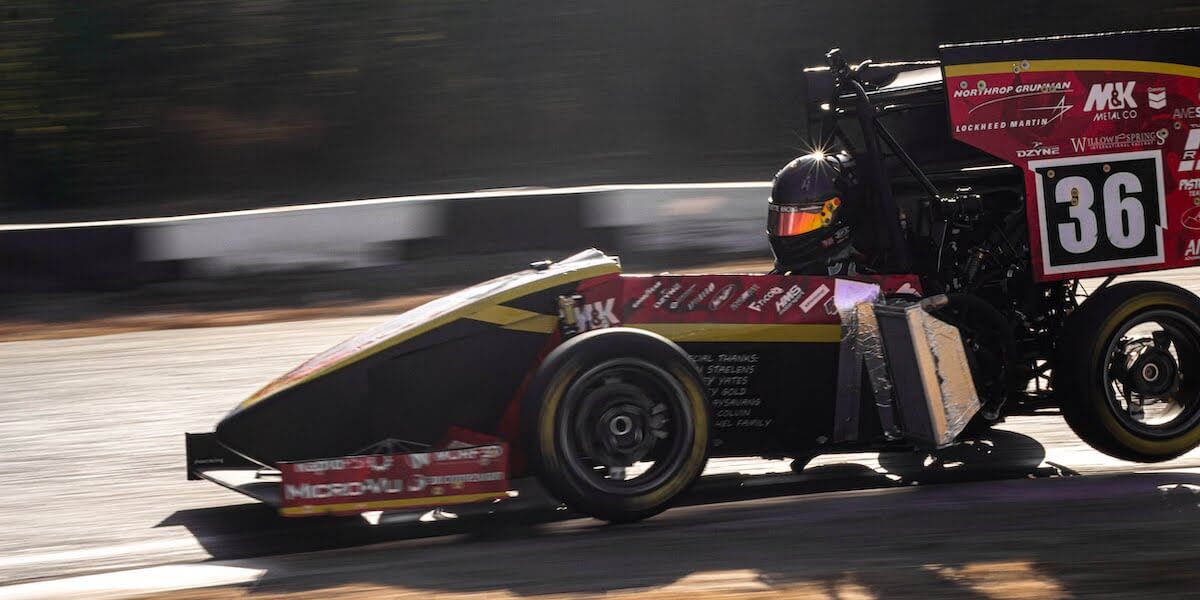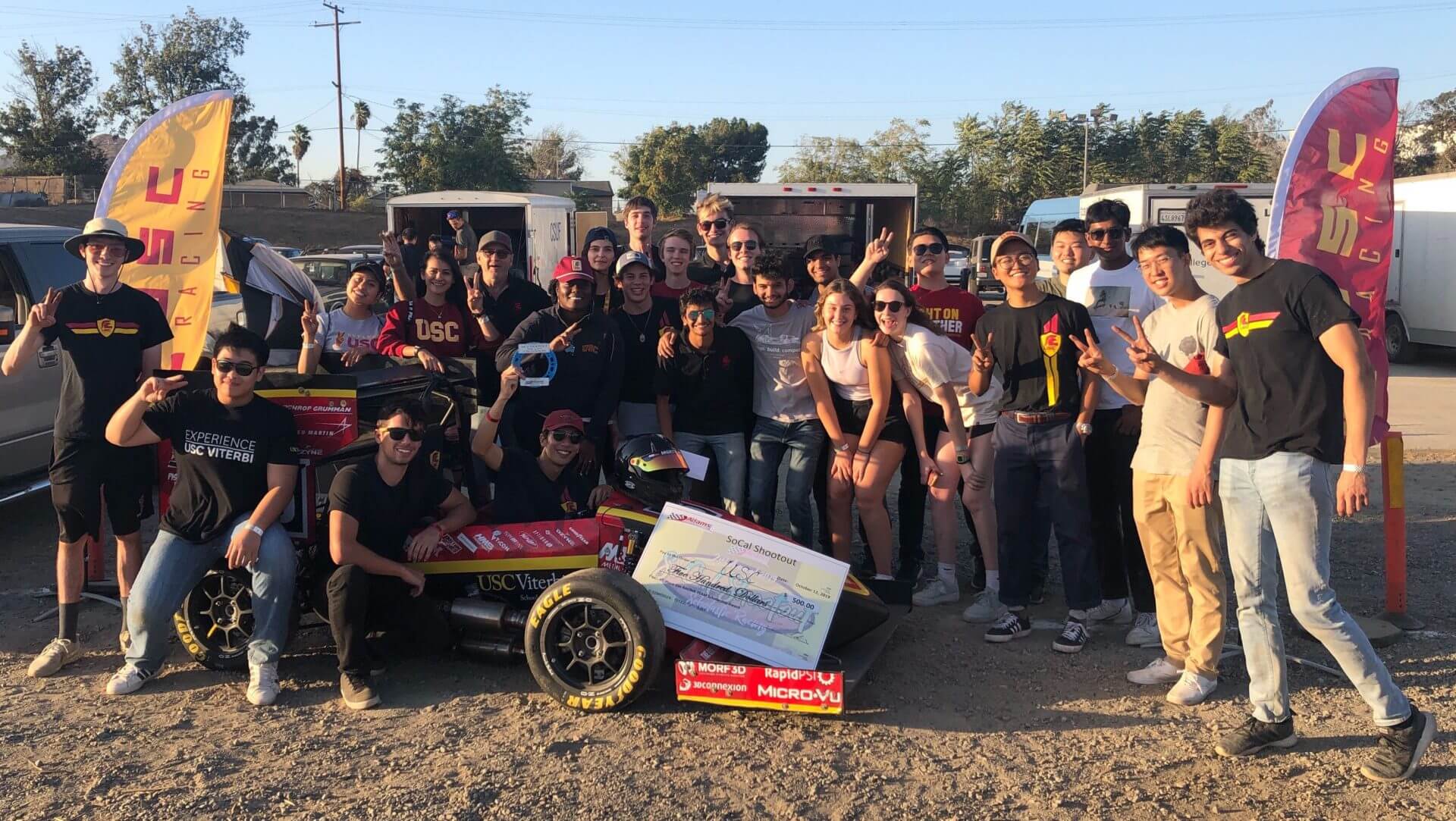
USC’s Formula SAE Racing team competes at the 2nd Annual SoCal Shootout in Riverside, CA. PHOTO/COURTESY OF PHILIP CAMPOSANO
On Saturday, October 19, 2019, the day of the 2ndannual SoCal Shootout, the USC Racing team’s car would not start. After identifying the issue—the ECU or engine’s computer needed to be replaced—the team waited for one of its members to transport a spare ECU from campus to Riverside, CA, where the competition was taking place. While the other teams had been churning laps since 10am that morning, USC Racing was only able to compete in the final heat of racing. Once its car hit the track, though, it took off; in just over 47 seconds, USC Racing’s steel space frame took first place at UC Riverside’s race competition, which showcased the engineering of 11 teams at the Adams Motorsports Park. USC Racing was 1.7 seconds faster than the second-place team, Cal Poly Pomona FSAE, and peaked at 2.3G’s of acceleration, which is almost 80% of the speed astronauts reach at takeoff.
USC Racing first debuted this car in Lincoln, Nebraska for the official Formula SAE competition in June, where the team came in 32ndplace. With 13-inch wheels and a four-cylinder Yamaha R6 engine, the car was lighter than previous years, with better vehicle dynamics and drivability. For this team, which struggled in Lincoln, NE, this race meant redemption. The goal: finish in the top 10.
“During the official Formula SAE competition in Lincoln, we experienced a mechanical failure during the endurance portion—the most important event. We were unable to meet our target goal in 2019 of being in the top 15. By finishing and winning the SoCal Shootout, we were able to get redemption and more importantly, validate and prove the engineering designs we came up with last year,” said Philip Camposano, USC ‘22, president of USC Racing.

USC Racing took home first place after beating out ten other teams from SoCal and Arizona in the SoCal Shootout. PHOTO/COURTESY OF PHILIP CAMPOSANO
The road to redemption was not easy. The day before the race, during Friday’s practice sessions, the team battled various fueling and electrical issues. “It took endless troubleshooting and determination to get the car running properly,” said Maximillian Bui, project manager for USC Racing and USC Viterbi mechanical engineering and engineering management double major. “By 9pm we finally got the car running perfectly—or so we thought. On Saturday morning, the car wouldn’t start.”
Competition day began with hours of troubleshooting, which resulted in the team replacing the ECU—the engine’s computer—just in time to compete.
Said Bui: “With the car finally functioning properly, we set the fastest lap in the last heat of racing. The biggest takeaway was working as a cohesive team to troubleshoot the issues we faced and work together towards a solution. The fact that we ended up winning despite the challenges we faced was a great achievement and relief.”
UC Riverside hosted the SoCal Shootout, bringing together over 200 students. Participating university racing teams included teams from Chico State, Cal Poly Pomona, Cal Baptist University, Cal State Fullerton, Cal State Los Angeles, San Diego State University, UC San Diego, UCLA, UC Riverside and the University of Arizona.
“The other teams had great designs that pushed us to perform well and from which we learned a lot. Formula SAE has very open rulebook, which results in the many different ways teams approach the design of their vehicles. You’ll see all sorts of car packages from 1-cylinder turbo-charged engines to 4-cylinder ones, cars that weigh just over 300 pounds to cars that weigh around 500 pounds, and cars with steel chassis to full carbon fiber monocoques,” said Camposano.
Currently, the team is finishing designs for its next car, SCR20. USC Racing will compete again in June 2020 at the Auto Club Speedway in Fontana, CA for the annual Formula SAE competition. This victory in Riverside gave them the boost they needed to move forward.
Said Camposano: “It was a great motivator for the team, because this was the first event we have ever won and through which we’ve proved the potential of our engineering.”
Published on November 18th, 2019
Last updated on November 21st, 2019







